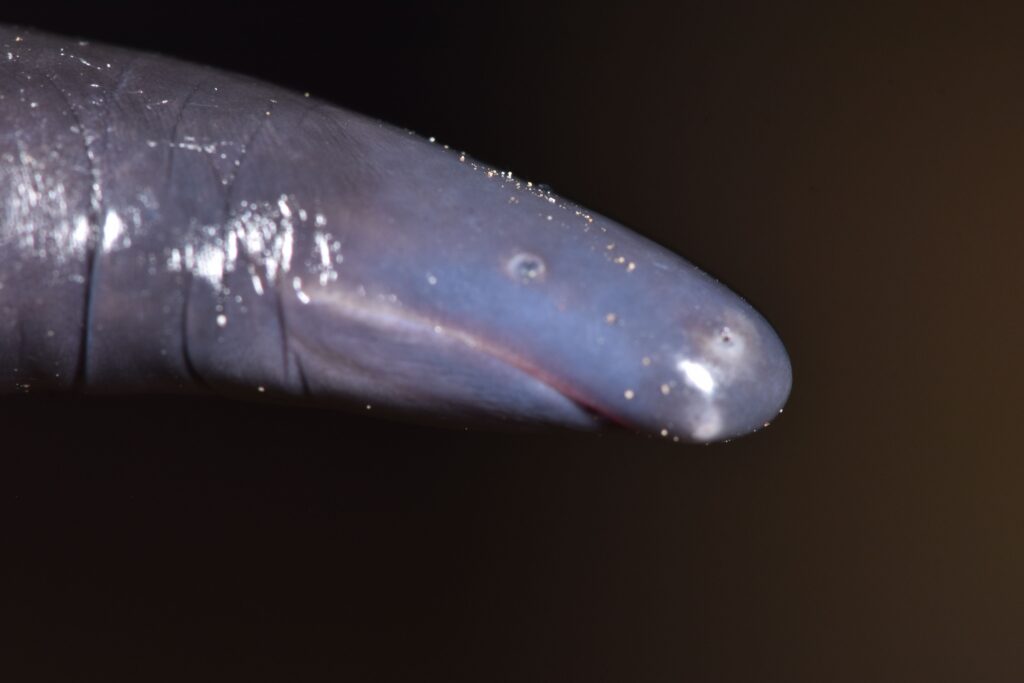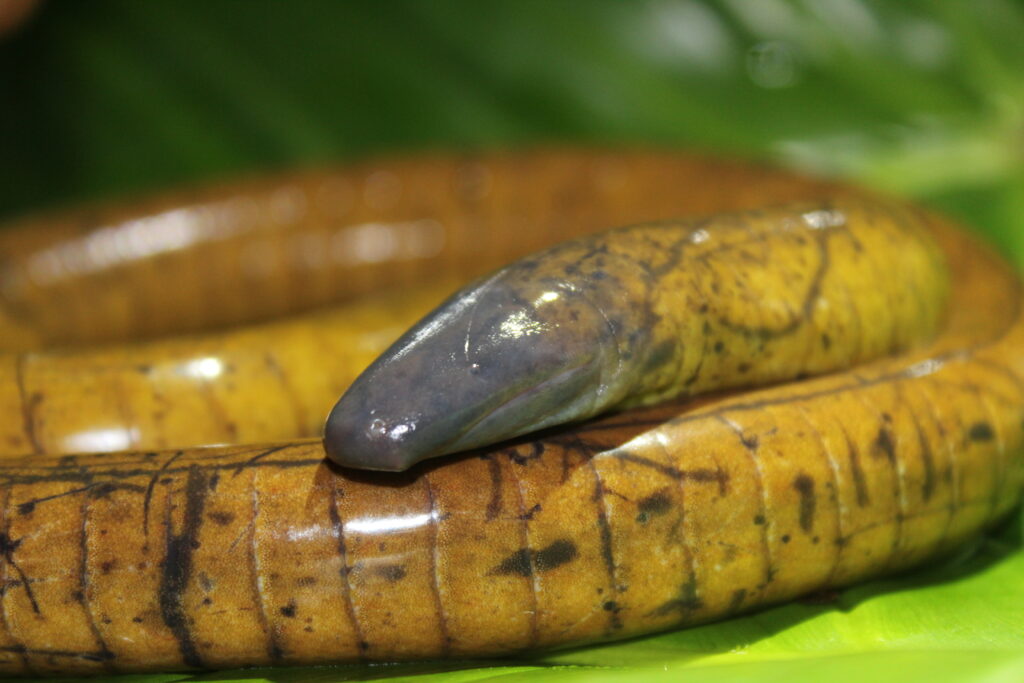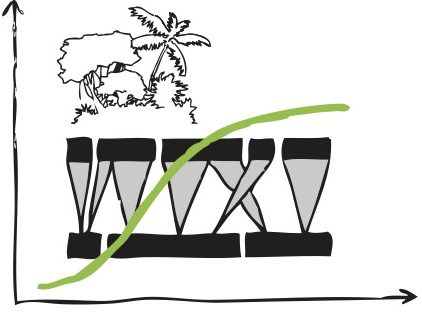The Ecuadorian Chocó forests are highly diverse and therefore have attracted the attention of many researchers, including those working on amphibians. However, new species may still be discovered as a new study shows, now published in the Joournal Salamandra by researchers from the Reassembly unit and their colleagues from the Pontificia Universidad Católica del Ecuador. Both research groups independently discovered two new species of worm-like amphibians, so called caecilians, in the forests of our partner organizations, Jocotoco and Tesoro Escondico and in the collection of the Catolica University in Quito. Caecilians are a group of tropical amphibians which almost always live underground. Therefore very little is know about their distribution, biology and the number of living species. One of the two new species is not even small, with about 80 cm body length it belongs to the largest known amphibian species worldwide! It also has a very unique coloration, grey head and tails and a yellowish body with black marks, at least in large individuals. Younger animals seem to have a very different coloration, a color change process that was not yet known from caecilians. The young ones are greyish dark. The second new species shares this coloration, but has a very distinct, truncated head shape. The researchers named the big species after the Tesoro reserve, to honor the engagement of our partners in order to protect some of the last remnants of original Chocó forest. In forecoming years, the researchers hope to find out more about the distribution and the biology of these two unique new species.



